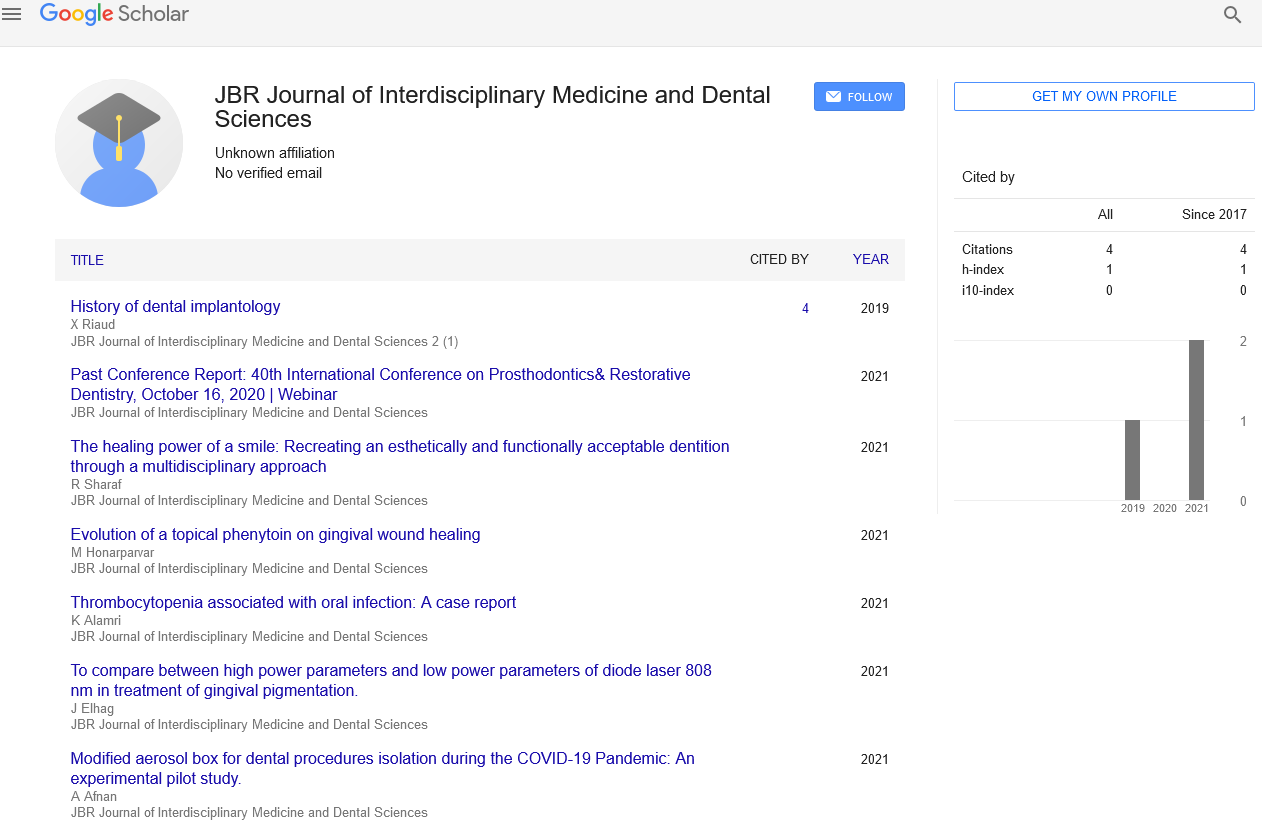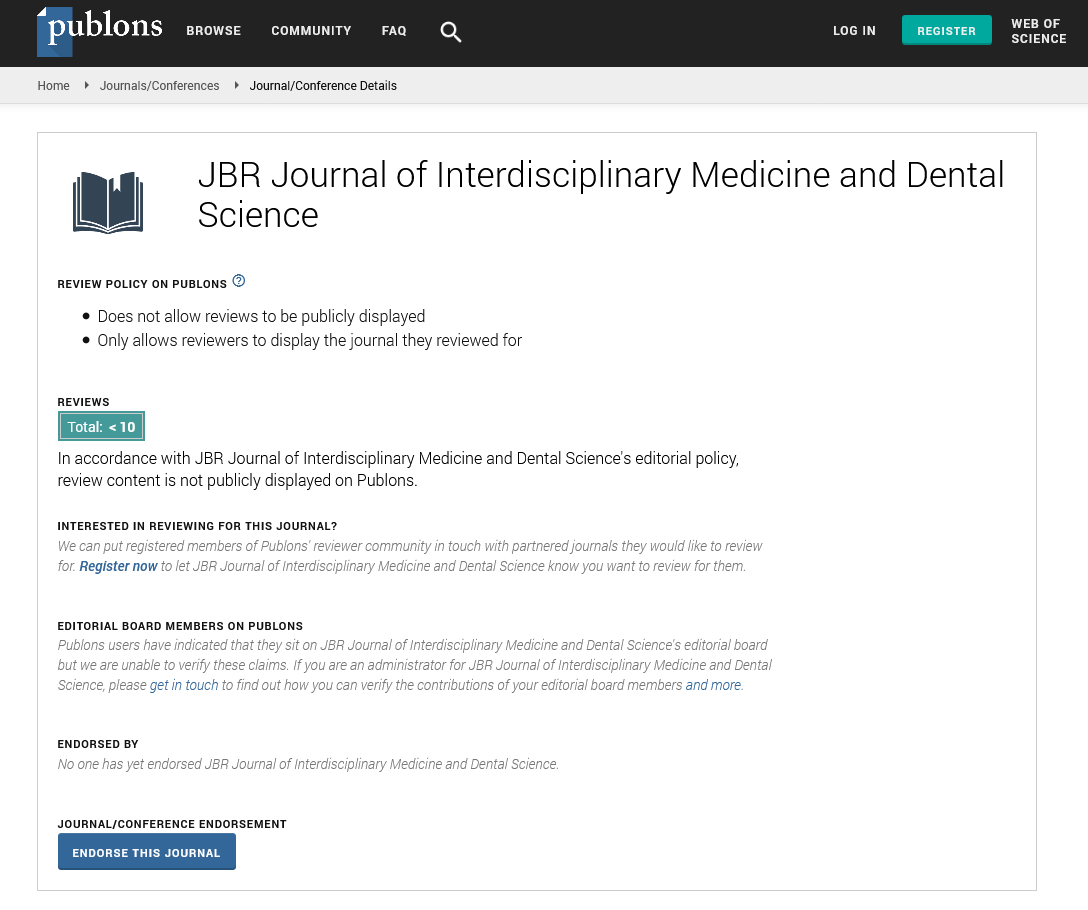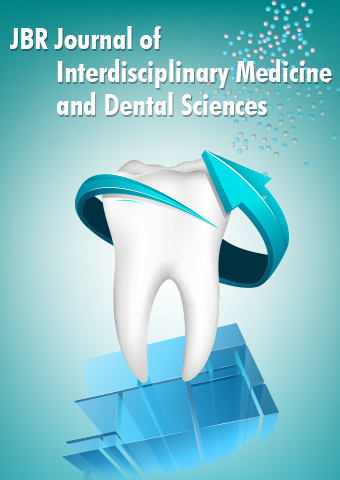Short Communication - JBR Journal of Interdisciplinary Medicine and Dental Sciences (2019) Volume 2, Issue 2
A new era of oral care
Paula Arroyo
Clínica Dental Cumbre Apoquindo, Chile
Abstract
It is essential to value and enhance oral self-care from the early stages of life, recognizing our habits and facing the risk that we run if we do not practice it. With the help of an expert dentist we can select the necessary elements to maintain proper oral care. The components of toothpastes such as LSS Sodium Lauryl Sulphate have a detergent and foam-forming action, carrying out a dragging action of food found on the tooth surface. Although it is backed up by organizations such as the FDA and EPA, it shows concern in users when evidencing action on the natural lipids of our skin and mucosa, often causing irritation in these tissues. An attractive proposal to consider as an ingredient that gives the same action as LSS sodium Lauryl sulphate is Lauryl Sarcosinate, a natural amino acid found in the human body and in almost all kinds of biological material from animals and plants.
Another component present in toothpastes is glycerol or glycerine, its main action is to prevent the toothpaste from drying out, deliver a consistent texture and give smoothness to slide from the toothpaste tube. Components such as coconut oil and tea tree oil, among others, can be a good option to grant these characteristics that glycerol meets today in a large part of the market. These natural oils, although they require more evidence with scientific support, have gained considerable strength in the world market for toothpastes.
In spite of the fact that the brushing time is estimated at two minutes more or less, according to studies carried out at the University of Newcastle, it is essential to recognize factors such as quality of brushing training, age and the opportunity to do it properly. The pressure to be exerted is similar to that performed when holding a 150-gram orange which can also be compared to the smoothness we apply when cleaning a glass surface. Thera are several techniques and few agreements among professionals causing confusion for users.
A commercial research company from Queen Mary University of London in the United Kingdom introduced toothpaste with bioactive glass materials in 2016, which can reduce tooth decay and tooth sensitivity. The ingredient in the paste contains natural elements that you can find in the body, such as calcium, phosphorous, sodium and silica. The slow release of calcium and phosphorous ions claims to be more effective in replacing lost minerals from tooth surfaces than with conventional toothpastes, ensuring and improving the natural repair of the tooth surface."
The world of oral care has innovated with products from nanotechnology incorporating active components in toothpastes. They can remineralizer the enamel of dental surface and repair dental micro-injuries, such as amine fluoride, hydroxyapatite nanoparticles, among others. It is also worth noting the incorporation of probiotics in toothpastes. Their action is that they could compete with the pathogenic microbial flora and enhance a beneficial flora, thus reducing oral diseases associated with caries and periodontal disease. This is a promising subject of study
Aloe vera barbadiensis also shows attractive oral care properties, showing a beneficial action on toothpaste through aloe, an antibacterial, anti-inflammatory, and healing agent that acts comprehensively on both hard and soft tissues, which constitute 80% of our oral cavity. Activated carbon in toothpastes has also attracted an innovative public that challenges traditional white pastes; the interesting thing about this component is its ability to absorb nitrogenous compounds showing a depigmenting action.
It is interesting to be able to take a balance between the nanoactive, bioactive and sustainable component elements in dental hygiene. With this, it must be considered that the packaging of toothpastes is a challenge that several companies are addressing nowadays. Conventional toothpastes in trilaminate tube with aluminium inside will be part of a past, and we will see how polyethylene will gain strength in search of taking care of our planet through more environmentally friendly components.
In addition, toothbrushes have also transformed the sustainable market for a few years now. For example, bamboo toothbrushes have proven to be functional and bioactive in their structure by possessing Lignin -an organic polymer- that provides antibacterial characteristics. This was proven in a study carried out by the faculty of Dentistry of Universidad de Chile, in Santiago Chile. University's faculty of dentistry. The study showed that there was a 50% less growth of Escherichia Coli in a bamboo toothbrush versus a conventional plastic toothbrush.
On the other hand, when comparing manual versus electric toothbrushes, the first one seems to be the favourite not only because of its lower cost, but also because it allows better hygiene techniques to be developed. This is because an electric toothbrush in children and people with special needs requires more attention since they could cause greater damage to the enamel if it is not properly handled when brushing their teeth. If it is used with the recommended gentleness, the loss of enamel and the formation of cervical abrasions are avoided, which can also be the reason of losing dental structure and pain in the patient.
Therefore, classifying and understanding the risk, we will address the necessary elements according to the age, motor skills, opportunity, and culture of each country. This is how in countries like India, Ayurveda - the name of traditional medicine in that country - is considered in elements such as vassa, pitta and prana when choosing the elements in toothpastes and fluoride does not seem to have many followers.
Conclusion:
In order to deliver education for our patients, teledontology is a useful tool to provide our patients with close contact. In addition, it is perfect for teaching oral hygiene instruction. We should strengthen it as a great universal culture in the challenge of reaching all places with internet access, for those communities that do not have good opportunities to have easy access due to geographic or economic conditions and who deserve timely treatment.


